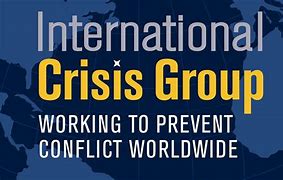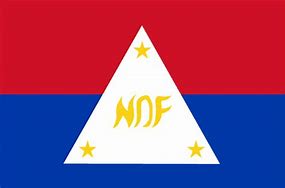
The International Crisis Group (ICG) founded by George Soros, Mark Malloch Brown, Morton I. Abramowitz and Stephen Solarz did a fairly long commentary on April 19, 2024 on why the Marcos Jr. administration should pursue peace negotiations with the National Democratic Front of the Philippines (NDF).
However, the commentary, more than 20 pages long, was apparently written by Georgi Engelbrecht, its senior analyst for the Philippines, who was also quoted on May 6, 2022 that only older Filipinos oppose Bongbong Marcos based on what he said were demographics, with younger Filipinos not knowing about martial law, which might be a spurious argument.
The ICG is supposed to be a think tank concerned with preventing or ending deadly conflict all over the world, and Engelbrecht took to reading a lot and interviewing people to produce a piece attuned to what the ICG really wants: For the NDF to finally negotiate a comprehensive peace agreement with the Philippine government. It failed to take note of the motivation of the Marcos Jr. administration to consent to peace negotiations that the Duterte regime scuttled in 2018 as part of its strategic plan to destroy the revolutionary movement.
ICG did not discuss why Marcos insists that all NPA guerilla fronts have been dismantled while the Armed Forces of the Philippines (AFP) reluctantly agreed that 11 fronts are operating while the NPA itself said on March 29, 2024 that many fronts have been reorganized to handle horizontal units while vertical units were revitalized. Marcos Jr. wants the peace talks to continue even as his own peace talks with the Dutertes have not commenced after acrimonious exchanges in the media and in the legislature.

ICG’s analysis did not tackle the structural basis of the insurgency even as it agreed that agrarian reform is a crucial element in weaning away the peasantry from supporting the armed struggle and scored military abuses, suggesting that there be more women police officers and soldiers who would work with local leaders and push development projects and programs to integrate surrendered combatants into various communities.
The ICG analysis says the revolutionary movement has declined and the peace negotiations offer Marcos Jr. a chance to end the hostilities that officially started on March 29, 1969. From a high of 25,000 personnel in 1986 (a figure that doesn’t tally with the actual NPA strength in that year), ICG now says the NPA is down to 1,500 guerrillas despite the fact that clashes between the NPA and the AFP have occurred in 42 out of 82 provinces last year.
Despite huge military offensives after the collapse of peace negotiations during the Cory Aquino, Ramos, Estrada, Arroyo, Noynoy Aquino and Duterte regimes, the revolutionary forces managed to survive and even expand. This should confound the ICG analysts who claimed that the split triggered in 1992 led to the loss of 40% of guerrillas, 40% of territory (they are guerrillas, not a standing army), 15% of party members and 60% of its mass base. Such huge figures should have crippled the movement but they did not.
“The Maoist insurgency in the Philippines is at its lowest ebb in decades. But it has not been vanquished, and the armed conflict remains both a challenge for the state and a threat to public safety in pockets across the country. The government’s military successes in the last few years have lent it confidence in its capacity to end the rebellion once and for all… Manila’s attempts to transform the conditions that have fueled the communist rebellion are at the heart of its quest to close this painful chapter in the country’s history… The Philippine state has done much to blunt the guerrilla movement and deplete its ranks. Now is the time to reach further in its bid to tackle the political, social and economic causes that fuel the insurgency, so that this decades-old conflict can finally draw to a conclusion,” the ICG concluded. (DEO MAGNO)